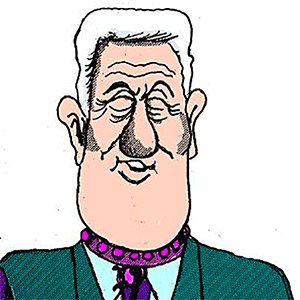Teachers, parents give Idaho school board an earful over 'Everyone is welcome here' classroom sign
Published in News & Features
BOISE, Idaho — The West Ada School District has faced weeks of backlash after instructing a sixth-grade teacher to remove signs containing inclusive messages from her classroom in Meridian. In its first meeting since the teacher went public with her story, the school board faced that feedback in person.
Testimony from dozens of parents, students and teachers mostly supported Sarah Inama’s signs, including one that says “Everyone is welcome here.” But the board was divided.
Over 100 people gathered Monday for the meeting at the West Ada district office in Meridian. Many donned T-shirts emblazoned with the message that “Everyone is welcome here,” above hands with different skin tones and hearts in their palms.
That “imagery” is what district administrators previously said violated district policy on “content-neutral” classrooms, because the different skin colors of the hands could be associated with diversity, equity, and inclusion.
One board member defended the district’s decision, while another faulted it. Others shied away from taking a stance on the sign but lamented the political climate and the ways in which some administrators had been made a “target” of public frustration.
Sarah Inama defends ‘Everyone is welcome’ sign
The teacher at the center of the sign controversy had a few words to say.
“I, over the span of about a month, explained my stance on my posters to multiple people at my school and district personnel ... before I was given a final answer,” said Inama, who teaches world civilization at Lewis and Clark Middle School. “I want to make clear that I did not go straight to the news or bypass any process. I was very interested in having conversations and finding a solution for this that served our students well.”
“I also never politically timed or planned any of this,” Inama said, referring to a mock podcast in which Chief Academic Officer Marcus Myers suggested that Inama had timed the controversy with KTVB’s Brian Holmes.
Inama said she does not believe her sign is political and that if it were, she would not have put it up. “What is the political opinion?” she asked. “I still have not been told that.”
Teacher says district decision fueled mistrust
Twenty-four people spoke, including several West Ada teachers. One said district actions had fueled mistrust and confusion.
“My classroom is full of rainbows, not as a statement, but because second graders love them,” said Andrea Jakious, a teacher at Seven Oaks Elementary School in Eagle.
Jakious said she was also told to remove a sign from her classroom after someone used an anonymous social media account to complain of so-called sexual rainbows at the school.
“For the district to validate that perception is disheartening and demeaning as an educator,” Jakious said. “It also damages something even more essential, the trust between families and teachers. It suggests we have hidden agendas, and undermines the partnerships we work hard to build with parents to support our students.”
Parents, students speak on bullying, harassment
Several parents testified about incidents of bullying and harassment their children had experienced or witnessed in schools. One, Anna Marie Young, has biracial children who have been the target of racist comments, including being called an “overgrown monkey,” the Idaho Statesman previously reported.
Young and others argued that there are students who do not feel welcome in West Ada, and that taking Inama’s sign down would reinforce that.
One West Ada student, Ella Duncil, said some students have noticed an increase in bullying since news broke about Inama’s sign, because “discriminatory people view that it is OK now to bully kids and their backgrounds due to this issue.” Duncil, a member of the student kindness committee at the Idaho Fine Arts Academy, asked board members to consider students’ mental health and teen suicide rates in their policy review.
A few people supported the sign’s removal and voiced concern that some responses to district administrators had been hostile.
“I think it was a poor outcome for all of the enthusiasm to lead to the bullying of some of our staff members as they were trying to work through this process,” said Jared Lucas, a West Ada parent.
Another parent, Melissa Gallagher, said she appreciated the district’s effort to “keep politics out of the classroom.”
“I understand it’s frustrating for staff and teachers to deal with the unfortunate aspect of the fact that a lot of imagery and iconography has been hijacked by specific sides of a political spectrum,” Gallagher said. She said she hoped that some parents’ concerns over such iconography would be taken seriously as well.
Board members express ‘different views’
West Ada Trustee René Ozuna emphasized her “full support of the posters that were asked to be removed.”
“When I voted on policy 401.2 a few years ago, I did so to keep politics out of classrooms,” Ozuna said. “I still believe this is the right thing for our students. What I didn’t anticipate was that a message of inclusion or words in primary colors can be seen as political. I won’t accept that. I don’t believe that’s best for our students, staff or community, and it’s also in line with the vast majority of feedback I’ve received.”
But Trustee David Binetti said he believed that “Everything was done right here.”
Binetti said that “while it is incredibly rare, we do have to acknowledge that some teachers ... do take advantage of their position of power and authority to sway in political and social concerns and inject their opinions and personal perspectives onto” students.
“It is something that we discount at our collective detriment. That fear that some parents have is not unfounded,” he said. “The fear for them is real.”
He called the decision to remove the sign “a judgment call: somebody trying to do his job to the best of his ability in consultation with those around him.”
Board Chair Lori Frasure and Trustees Angie Redford and Lucas Baclayon were less clear on what they thought of the sign and the district’s actions.
“In order for us to make a statement, we have to agree,” Frasure said. “And you can see we have different views.”
Redford said she appreciated the public’s input and that no one resorted to threats or violence, though she said a member of the district’s executive team had been wrongly “used as a political punching bag.”
“I think we can all agree that we all hate that we are in such a divisive situation with everything,” Redford said. She agreed that the district’s display policy needs “more clarity.”
Baclayon, who moved with his family from Taiwan to the Boise area seven years ago, acknowledged racist acts and rhetoric his children have experienced. “I absolutely support that the rhetoric that everyone is welcome here,” Baclayon said.
He said the district can strive toward both welcoming students and maintaining neutrality in the classroom.
Frasure closed board statements by lamenting that “we live in a highly politicized world” that “changes sometimes by the week.”
“I do believe the best thing we can do is try and keep as much conflict out of the classroom as possible,” the board chair said.
West Ada to review policy on staff conduct
West Ada has spent 18 months reviewing Section 400 of its policy, which includes the classroom display, the Statesman reported. The first draft of revised policy was unveiled for discussion Monday.
Niki Scheppers, the district’s chief of staff and communications, presented the revisions and noted that they would be reviewed three times, with the goal of the board finalizing the policy around July 1 to be implemented in the 2025-26 school year.
The first draft drops the existing classroom display policy, 401.20, and replaces it with 403.50, a staff-conduct policy that simply says staff must “conduct themselves in a manner consistent with all federal, state and local laws and regulation.” The proposed policy directs the superintendent or a designee to develop any appropriate procedures.
It also adds two administrative regulations, 04 and 09, that would outline a process for what happens if there is a dispute over a classroom display, including an appeals process. These regulations would be the purview of the executive team.
Superintendent Derek Bub said one objective of the review is to align policy with a new state law banning Idaho schools from displaying flags and banners promoting political, religious or ideological viewpoints, which will go into effect in July.
No action was taken on the draft policy changes.
_____
©2025 The Idaho Statesman. Visit idahostatesman.com. Distributed by Tribune Content Agency, LLC.







Comments